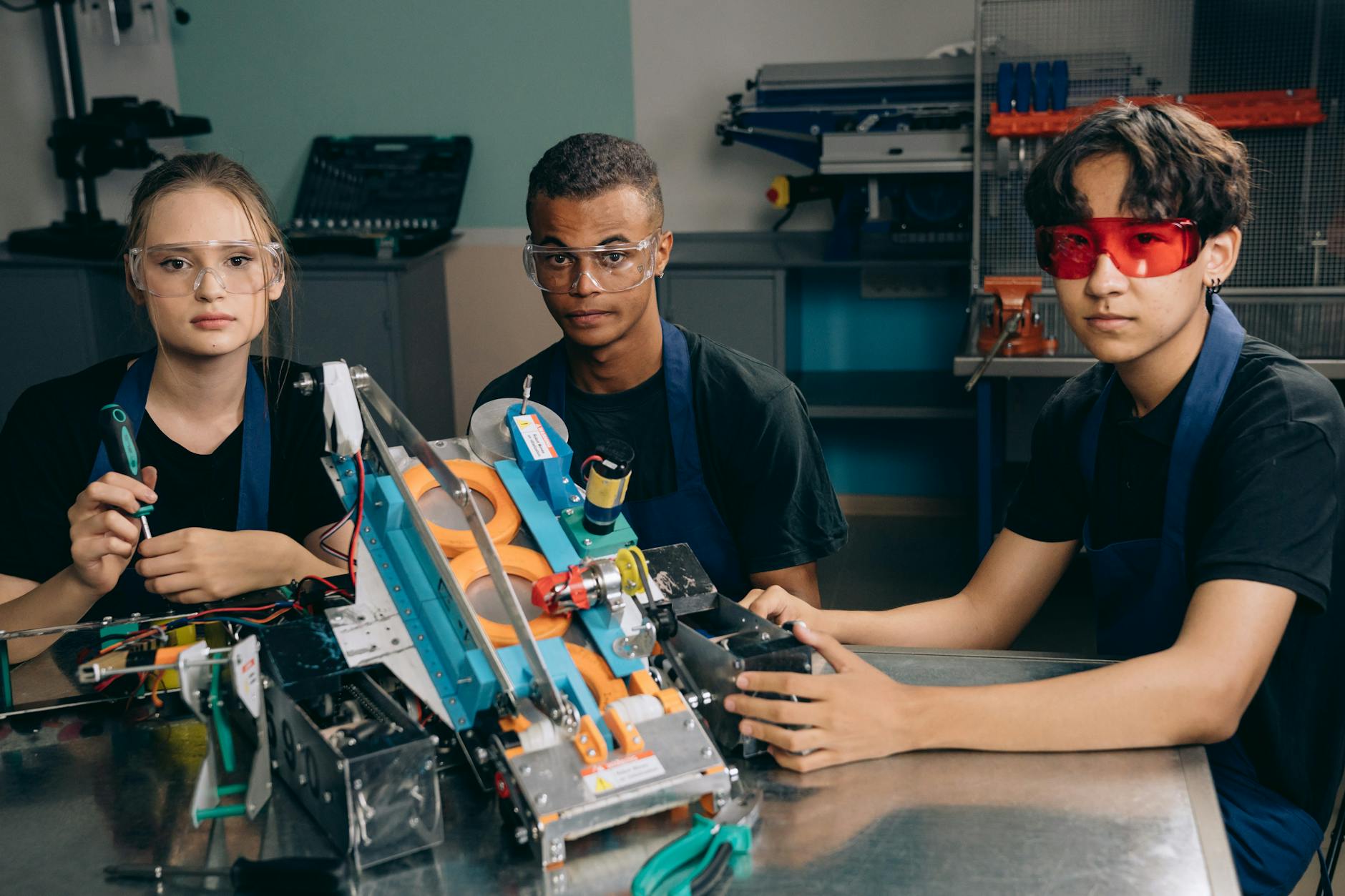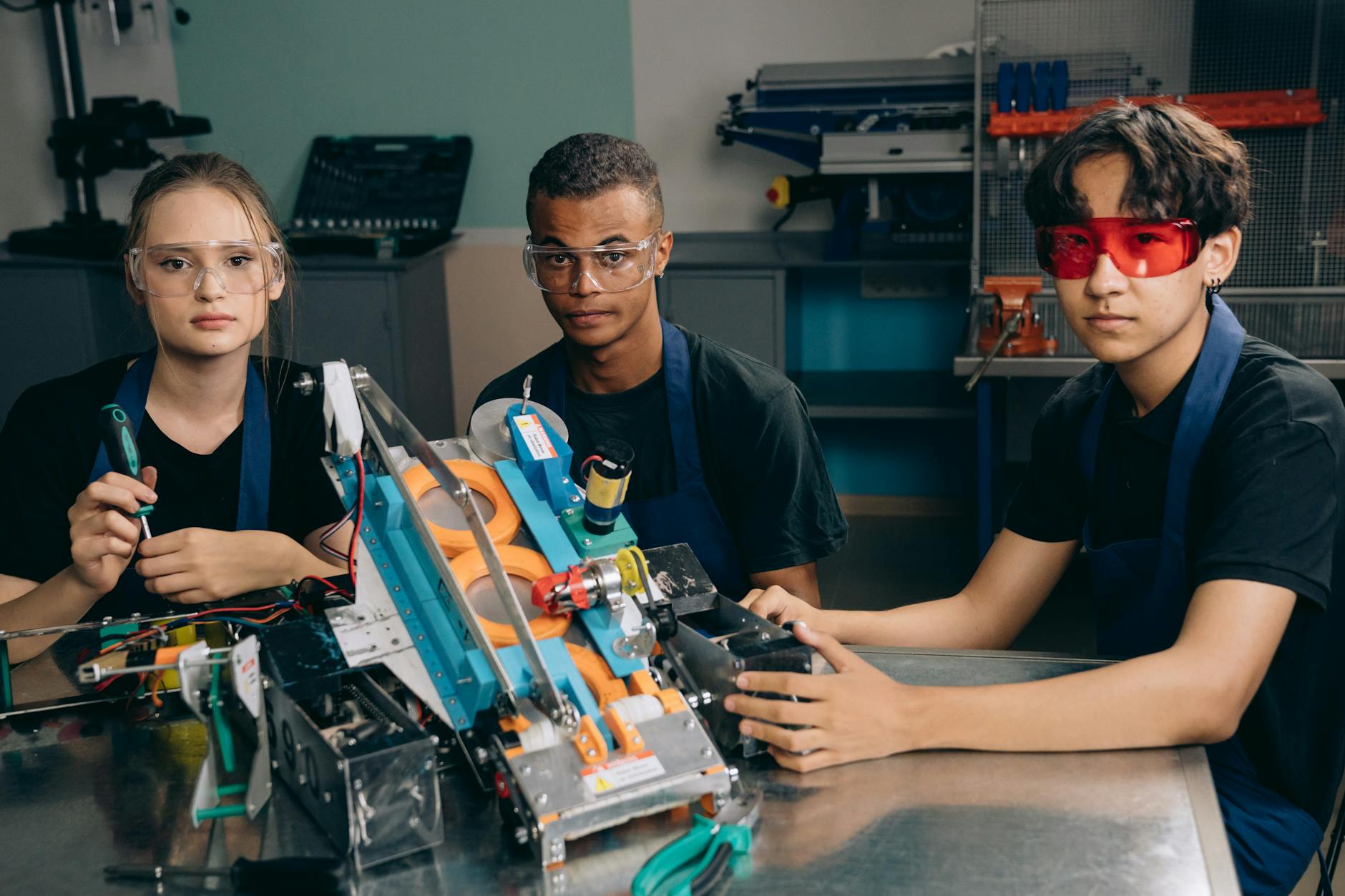
Image courtesy of Mikhail Nilov via <a target="_blank" rel="noopener noreferrer" href="https://www.pexels.com/photo/man-in-black-shirt-wearing-red-protective-goggles-sitting-beside-man-in-black-shirt-9242846/">Pexels</a>
Unlock the mysterious world of A.I. art as we delve into how code and canvas come together in unexpected ways.
Table of Contents
Isn’t it fascinating how technology is constantly pushing the boundaries of what we thought was possible? From artificial intelligence to robotics, the world of tech is always evolving. Today, let’s dive into the mesmerizing world of A.I. art and explore how machines are transforming the way we create and appreciate art.
Artificial Intelligence in the Creative World
When we think of A.I., we often imagine it being used for complex calculations or data analysis. However, in recent years, A.I. has also made its mark in the creative realm. Through the power of machine learning algorithms, computers are now capable of generating artwork that can rival the creations of human artists.
A.I. art is not about replacing human artists but rather about augmenting their creative abilities. By crunching vast amounts of data and recognizing patterns, AI algorithms can produce unique and innovative pieces that challenge our perception of art.
The Intriguing Intersection of Technology and Artistry
One of the most exciting aspects of A.I. art is the collaboration between human artists and machines. Artists are exploring new ways to incorporate technology into their creative process, leading to stunning and thought-provoking pieces.
Imagine a scenario where a painter uses a computer program to generate a visual landscape, which they then manipulate and enhance with their own artistic touch. This fusion of human creativity and machine processing results in artworks that blur the lines between the digital and physical worlds.
Unlocking Creativity Through Automation
Automation is another key feature of A.I. art. Instead of starting from a blank canvas, artists can leverage generative algorithms to kickstart their creative process. These algorithms provide the foundation for artists to build upon, enabling them to explore unexpected avenues and experiment with new techniques.
By embracing automation, artists can break free from traditional constraints and tap into endless possibilities. The ability to rapidly iterate and refine ideas allows for a more dynamic and fluid creative workflow, ultimately leading to the birth of captivating artworks.
The Beauty of Imperfection in A.I. Art
One of the unique aspects of A.I. art is its imperfections. Unlike a machine performing a set task, A.I. algorithms often introduce unexpected quirks and anomalies into the artistic process. These “glitches” add a human-like touch to the artwork, making it even more intriguing and captivating.
| Date | Speaker | Topic |
|---|---|---|
| January 15 | Dr. Rebecca Smith | Evolution of A.I. Art |
| January 22 | Professor Alex Chen | Machine Learning in Art |
| January 29 | Dr. Maya Rodriguez | Visualizing Neural Networks |
| February 5 | Simon Davis | Creating A.I. Art Installations |
Embracing these imperfections opens up new avenues for experimentation and innovation. Artists are not bound by conventional artistic standards but instead have the freedom to embrace the serendipitous nature of A.I.-generated art.
Appreciating the Evolution of A.I. Art
As A.I. art continues to evolve, it challenges us to rethink our definitions of creativity and artistic expression. The fusion of technology and artistry opens up a world of possibilities, inviting artists and audiences alike to explore new horizons and push the boundaries of traditional art forms.
So, the next time you come across a mesmerizing piece of A.I. art, take a moment to appreciate the intricate dance between code and canvas. Who knows, you might just discover a whole new appreciation for the beauty of technology in the creative world.
FAQs
Question 1: How is artificial intelligence used in creating art?
Answer 1: Artificial intelligence in art involves machine learning algorithms generating artwork through data analysis and pattern recognition, augmenting human creativity.
Question 2: What is the role of automation in A.I. art?
Answer 2: Automation in A.I. art enables artists to start their creative process with generative algorithms, providing a foundation for exploration and experimentation.
Question 3: How do imperfections enhance A.I. art?
Answer 3: Imperfections in A.I. art add a human-like touch, introducing unexpected quirks and anomalies that make the artwork more captivating and intriguing.
Question 4: How does A.I. art challenge traditional artistic standards?
Answer 4: A.I. art challenges traditional standards by blurring the lines between technology and artistry, inviting artists and audiences to explore new creative horizons and push the boundaries of art forms.




